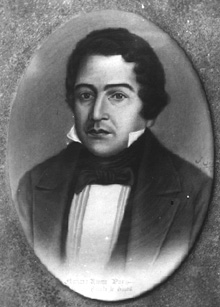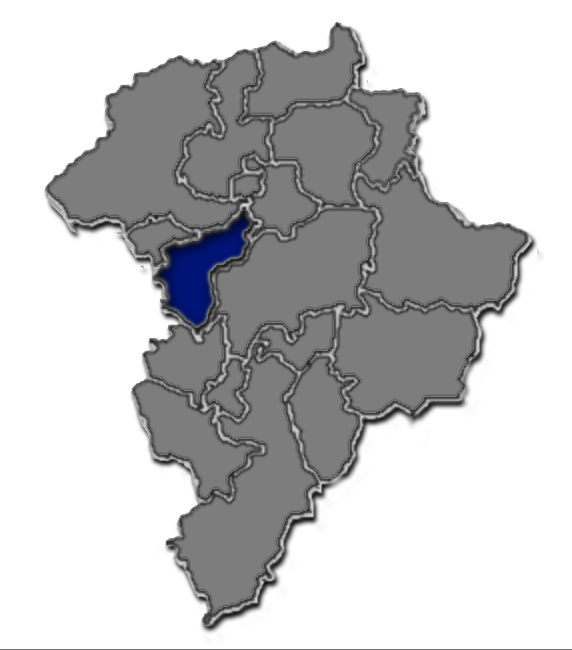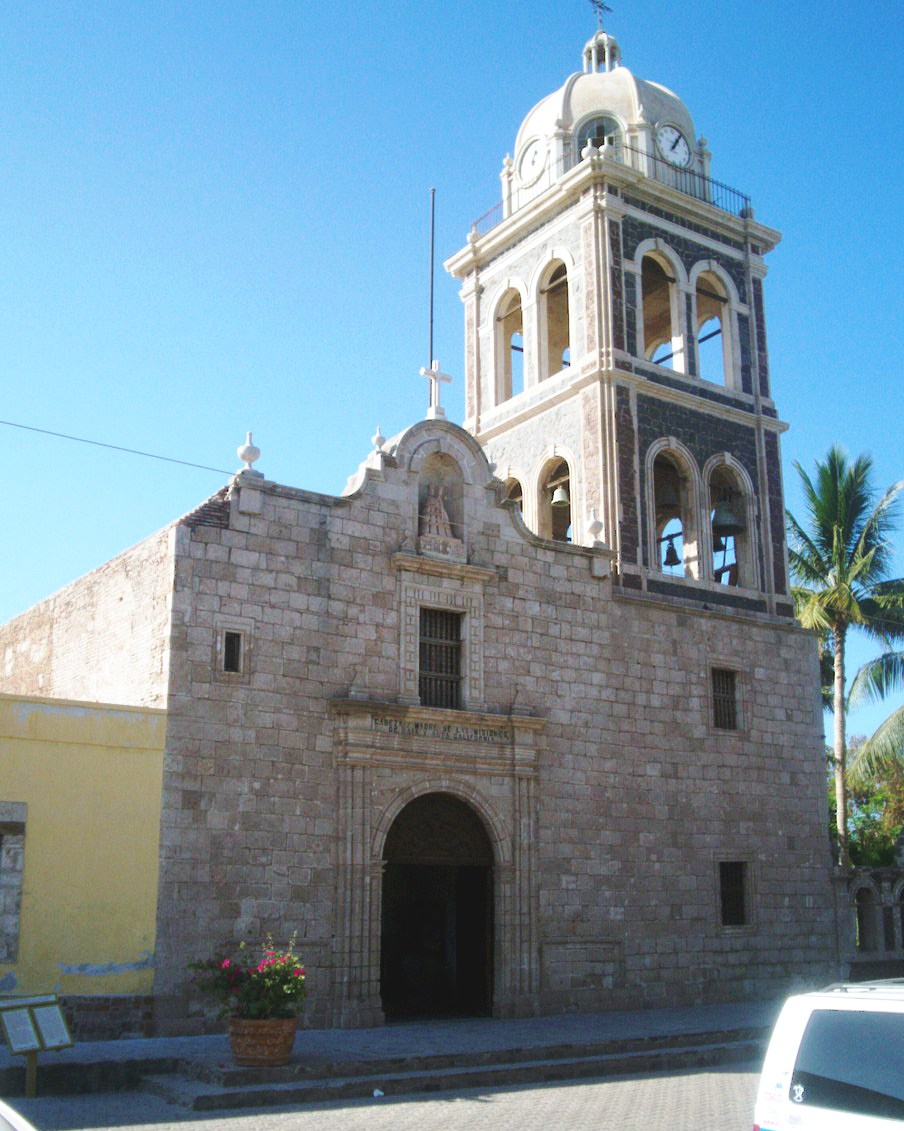|
Palín, Escuintla
Palín is a municipality in the Escuintla department of Guatemala. The town of Palín, which is the municipal seat, is located on the foothills of the Sierra Madre volcanic chain, south of Guatemala City. History According to the ancient oral tradition, Palín was settled by the Spanish conquistadores on 30 July 1535, although there is not any written documentation on the exact date that would have taken place. There is, though, a property title from 1751, that references the loss of the original document of the foundation of San Cristóbal Palín. Monastery and doctrine of Order of Preachers After the Spanish conquest of Guatemala, the Spanish crown focused on the Catholic indoctrination of the natives. Human settlements founded by royal missionaries in the New World were called "Indian doctrines" or simply "doctrines". Originally, friars had only temporary missions: teach the Catholic faith to the natives, and then transfer the settlements to secular parishes, just like ... [...More Info...] [...Related Items...] OR: [Wikipedia] [Google] [Baidu] |
Flag Of Guatemala
The flag of Guatemala, often referred to as "Pabellón Nacional" (literally, "National Flag") or "Azul y Blanco" ("Blue and White") features two colors: Sky blue and white. The two Sky blue stripes represent the fact that Guatemala is a land located between two oceans, the Pacific Ocean and the Atlantic Ocean (Caribbean sea); and the sky over the country (see Guatemala's national anthem). The white signifies peace and purity. The blue and white colors, like those of several other countries in the region, are based on the flag of the former Federal Republic of Central America. In the center of the flag is the Guatemalan coat of arms. It includes the resplendent quetzal, the national bird of Guatemala that symbolizes liberty; a parchment scroll bearing the date of Central America's independence from Spain, 15 September 1821; crossed Remington rifles, indicating Guatemala's willingness to defend itself by force if need be; a bay laurel crown, the symbol for victory; and cros ... [...More Info...] [...Related Items...] OR: [Wikipedia] [Google] [Baidu] |
Antigua Guatemala
Antigua Guatemala (), commonly known as Antigua or La Antigua, is a city in the central highlands of Guatemala. The city was the capital of the Captaincy General of Guatemala from 1543 through 1773, with much of its Baroque-influenced architecture and layout dating from that period. These characteristics had it designated as a UNESCO World Heritage Site in 1979. Antigua Guatemala serves as the capital of the homonymous municipality and the Sacatepéquez Department. Population The city had a peak population of some 60,000 in the 1770s; the bulk of the population moved away in the late 18th century. Despite significant population growth in the late 20th century, the city had only reached half that number by the 1990s. At the time of the 2007 census, the city had 34,685 inhabitants. History ''Antigua Guatemala'' means "Old Guatemala" and was the third capital of Guatemala. The first capital of Guatemala was founded on the site of a Kakchikel-Maya city, now called Iximche ... [...More Info...] [...Related Items...] OR: [Wikipedia] [Google] [Baidu] |
Mariano Rivera Paz
Mariano Rivera Paz (24 December 1804 – 26 February 1849) was Head of State of Guatemala and its first president. Biography Mariano Rivera Paz was born in Guatemala City and studied law in the Royal and Pontifical University of San Carlos Borromeo. Conflagration between Liberals and Conservatives In 1838 the liberal forces of Morazan and José Francisco Barrundia invaded Guatemala and reached San Sur, where they executed Chúa Alvarez, father-in-law of the Guatemalan military leader Rafael Carrera and laid his head on a pike to teach a lesson to all followers of the Guatemalan caudillo. Upon learnings this, Carrera and his wife Petrona - had come to confront Morazán as soon as they learned of the invasion and were in Mataquescuintla- swore they would never forgive Morazan even in his grave, as they felt that no one could respect someone who could not avenge family members. After sending several envoys, who Carrera would not receive -especially Barrundia who was not rec ... [...More Info...] [...Related Items...] OR: [Wikipedia] [Google] [Baidu] |
Bourbon Reforms
The Bourbon Reforms ( es, Reformas Borbónicas) consisted of political and economic changes promulgated by the Spanish Crown under various kings of the House of Bourbon, since 1700, mainly in the 18th century. The beginning of the new Crown's power with clear lines of authority to officials contrasted to the complex system of government that evolved under the Habsburg monarchs. For example, the crown pursued state predominance over the Catholic Church, pushed economic reforms, and placed power solely into the hands of civil officials. The reforms resulted in significant restructuring of administrative structure and personnel. The reforms were intended to stimulate manufacturing and technology to modernise Spain. In Spanish America, the reforms were designed to make the administration more efficient and to promote its economic, commercial and fiscal development. When looking at the material effects of how the Bourbon Reforms aimed to change the relationship between the Spanish Am ... [...More Info...] [...Related Items...] OR: [Wikipedia] [Google] [Baidu] |
Mixco
Mixco () is a city and municipality in the Guatemala department of Guatemala. It is next to the main Guatemala City municipality and has become part of the Guatemala City Metropolitan Area. Most of Mixco is separated from the city by canyons, for which a multitude of bridges have been created. Ciudad San Cristóbal, one of Guatemala's largest cities, is located in this municipality. It is the second largest city in Guatemala Department, after Guatemala City, with a population of 465,773. Administrative division The municipality is divided into zones with residential neighborhoods, villages, settlements and the municipal capital. Due to its close proximity to Guatemala City, several villages were turned into residential neighborhoods. From the residential neighborhoods it is excluded "La Florida", which separated from Mixco to join Guatemala City in 1958. Mayors Universities * UruralG * UPANA * USAC * URL *UNI Sports Deportivo Mixco football club play in the G ... [...More Info...] [...Related Items...] OR: [Wikipedia] [Google] [Baidu] |
San Miguel Petapa
San Miguel Petapa () also known as Petapa is a city and Municipalities of Guatemala, municipality in the Guatemala Department, Guatemala department of Guatemala, located south of Guatemala City. The city has a population of 129,124 according to the 2018 census. Population of the major cities in Guatemala History Monastery and doctrine of Order of Preachers  After the conquest, the Spanish crown focused on the Catholic indoctrination of the natives. Human settlements founded by royal missionaries in the New World were called "Indian doctrines" or simply "Indian Reductions, doctrines". ...
After the conquest, the Spanish crown focused on the Catholic indoctrination of the natives. Human settlements founded by royal missionaries in the New World were called "Indian doctrines" or simply "Indian Reductions, doctrines". ...
[...More Info...] [...Related Items...] OR: [Wikipedia] [Google] [Baidu] |
Amatitlán Department
The Amatitlán Department was one of the original departments of the Republic of Guatemala when it was created in 1839 as an independent district by governor Mariano Rivera Paz and then elevated to the category of department by conservative president Vicente Cerna y Cerna in 1866. It was abolished by general Jorge Ubico in 1935 and its municipalities were split between the Guatemala and Escuintla departments. It was formed by the modern municipalities of Amatitlán, Villa Nueva, Palín, Villa Canales and San Miguel Petapa. History Monastery and doctrine of Order of Preachers After the conquest, the Spanish crown focused on the Catholic indoctrination of the natives. Human settlements founded by royal missionaries in the New World were called "Indian doctrines" or simply "doctrines". Originally, friars had only temporary missions: teach the Catholic faith to the natives, and then transfer the settlements to secular parishes, just like the ones that existed in Spain at th ... [...More Info...] [...Related Items...] OR: [Wikipedia] [Google] [Baidu] |
Regular Clergy
Regular clergy, or just regulars, are clerics in the Catholic Church who follow a rule () of life, and are therefore also members of religious institutes. Secular clergy are clerics who are not bound by a rule of life. Terminology and history The observance of the Rule of St. Benedict procured for Benedictine monks at an early period the name of "regulars". The Council of Verneuil (755) so refers to them in its third canon, and in its eleventh canon speaks of the "ordo regularis" as opposed to the "ordo canonicus", formed by the canons who lived under the bishop according to the canonical regulations. There was question also of a "regula canonicorum", or "regula canonica", especially after the extension of the rule which Chrodegang, Bishop of Metz, had drawn up from the sacred canons (766). And when the canons were divided into two classes in the eleventh century, it was natural to call those who added mendicant, religious poverty to their common life regulars, and those who ga ... [...More Info...] [...Related Items...] OR: [Wikipedia] [Google] [Baidu] |
Catholicism
The Catholic Church, also known as the Roman Catholic Church, is the largest Christian church, with 1.3 billion baptized Catholics worldwide . It is among the world's oldest and largest international institutions, and has played a prominent role in the history and development of Western civilization.O'Collins, p. v (preface). The church consists of 24 ''sui iuris'' churches, including the Latin Church and 23 Eastern Catholic Churches, which comprise almost 3,500 dioceses and eparchies located around the world. The pope, who is the bishop of Rome, is the chief pastor of the church. The bishopric of Rome, known as the Holy See, is the central governing authority of the church. The administrative body of the Holy See, the Roman Curia, has its principal offices in Vatican City, a small enclave of the Italian city of Rome, of which the pope is head of state. The core beliefs of Catholicism are found in the Nicene Creed. The Catholic Church teaches that it is th ... [...More Info...] [...Related Items...] OR: [Wikipedia] [Google] [Baidu] |
Spanish Language
Spanish ( or , Castilian) is a Romance languages, Romance language of the Indo-European language family that evolved from colloquial Latin spoken on the Iberian peninsula. Today, it is a world language, global language with more than 500 million native speakers, mainly in the Americas and Spain. Spanish is the official language of List of countries where Spanish is an official language, 20 countries. It is the world's list of languages by number of native speakers, second-most spoken native language after Mandarin Chinese; the world's list of languages by total number of speakers, fourth-most spoken language overall after English language, English, Mandarin Chinese, and Hindustani language, Hindustani (Hindi-Urdu); and the world's most widely spoken Romance languages, Romance language. The largest population of native speakers is in Mexico. Spanish is part of the Iberian Romance languages, Ibero-Romance group of languages, which evolved from several dialects of Vulgar Latin in I ... [...More Info...] [...Related Items...] OR: [Wikipedia] [Google] [Baidu] |
Spain
, image_flag = Bandera de España.svg , image_coat = Escudo de España (mazonado).svg , national_motto = ''Plus ultra'' (Latin)(English: "Further Beyond") , national_anthem = (English: "Royal March") , image_map = , map_caption = , image_map2 = , capital = Madrid , coordinates = , largest_city = Madrid , languages_type = Official language , languages = Spanish language, Spanish , ethnic_groups = , ethnic_groups_year = , ethnic_groups_ref = , religion = , religion_ref = , religion_year = 2020 , demonym = , government_type = Unitary state, Unitary Parliamentary system, parliamentary constitutional monarchy , leader_title1 = Monarchy of Spain, Monarch , leader_name1 = Felipe VI , leader_title2 = Prime Minister of Spain ... [...More Info...] [...Related Items...] OR: [Wikipedia] [Google] [Baidu] |
Indian Reductions
Reductions ( es, reducciones, also called ; , pl. ) were settlements created by Spanish rulers and Roman Catholic missionaries in Spanish America and the Spanish East Indies (the Philippines). In Portuguese-speaking Latin America, such reductions were also called ''aldeias''. The Spanish and Portuguese relocated, forcibly in many cases, indigenous inhabitants (''Indians'' or ''Indios'') of their colonies into urban settlements modeled on those in Spain and Portugal. The word "reduction" can be understood wrongly as meaning "to reduce." Rather, the 1611 Spanish dictionary by Sebastián de Covarrubias defines ''reducción'' (reduction) as "to convince, persuade, or to order." The goals of reductions were to concentrate indigenous people into settled communities and to convert the Indians to Christianity and impose European culture. The concentration of the indigenous into towns facilitated the organization and exploitation of their labor. Reductions could be either religi ... [...More Info...] [...Related Items...] OR: [Wikipedia] [Google] [Baidu] |






.jpg)

